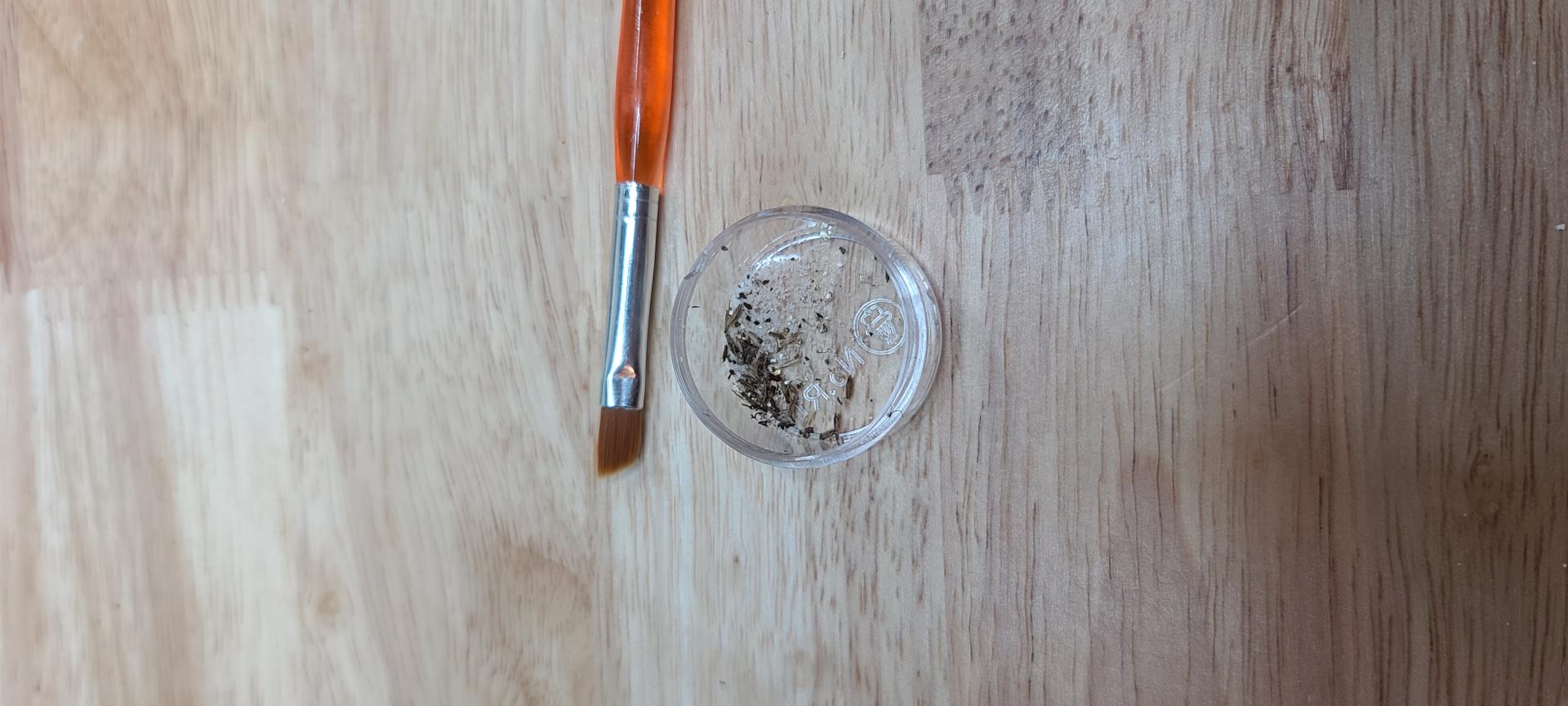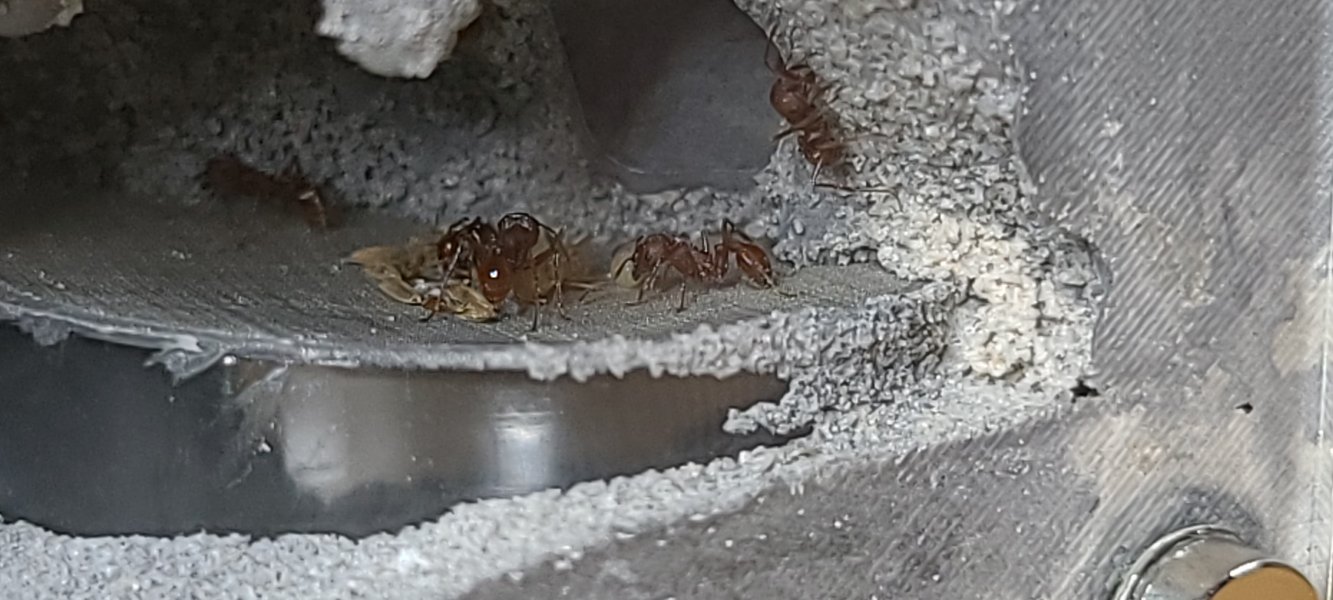DAY ONE
Yesterday was my first day as an ant keeper. I purchased a Pioneer formicarium from Tar Heel Ants which came with a Mini Hearth. Both of these formicarium are amazing! The pioneer is too big for my needs right now though so I decided to assess the health of the colony that I was sent and then begin the process of transferring them to the Mini Hearth.
I left the colony in their test tube which includes a genesis tube insert. Its quite a nice little habitat for a budding colony of ants and I can see this being useful in the future should I decide to expand into a native Ohio species that I am able to find. By my count there are about 15 workers, a healthy looking queen (as far as my amateur eye can tell), and about 8 eggs and 2 pupae. I wrapped a heating cable around the base of the forage area (which sits atop the nesting area) of the mini hearth in an effort to prep that colony to move in. I also move a heating cable close to the test tube to observe the ants reaction to the heat radiating toward the test tube. I was interested, and slightly worried, to see that the ants quickly (after about 30 minutes) began congregating toward the heated side of the test tube. I let this environment persist for about 8 hours as I decided how to move them in to the Mini Hearth.
The main issue I had was figuring out how to slowly move the ants into the forage area as the test tube was much larger than the forage area. With the forage area heated by the heating cable, I placed a few chia and dandelion seeds in the foraging area. I had also attached 2 water towers to the sides of the Mini Hearth which I filled about 75% before putting in a stopper. I placed the tube in the forage half in/ half out of the forage area as I understand that pogonomyrmex is unable to climb glass/plastic that is perpendicular to ground level which gave me some belief that there would be no escapes. When I did this however, several ants slid down the test tube into the forage area which disappointed me as I was trying to make this a gentle, stress-free, move in to their new home. I let the test tube sit and checked on the colony every 15 minutes or so to make there were no escape artists.
After 45 minutes, I noticed there were two escapees on my work bench! My gosh how had this happened? I grabbed a set of "feather" forceps that would allow me to gather up the escapees and reduce the risk of injuring them and placed them back in to the forage area. I figured that they must have figured out a way to climb out using the exterior of the test tube and decided that the safest thing to do would be to remove the genesis habitat from the test tube and place it in the forage area. Although it was a forced move I figured at least everyone was still in their original nest area. This allowed me to put the top back on the forage area and mitigate any further escape risk...right? Wrong! I found one more escapee and so I began inspecting the Mini Hearth as a whole to make sure I understood where all of the ports were. Amazingly, I neglected to plug to port holes in the back of the nest which gave them the ability to escape. I had no idea they were there and felt incredibly ignorant. I plugged these holes and placed the one escapee back in the forage area. I then began a one hour search through my work bench and surrounding floor/ wall to make sure there were no other escapists. Disaster averted!
DAY TWO
I checked on my colony throughout the night to make sure I hadn't missed any other escape points. The colony has officially moved in to the mini hearth and I was able to subsequently remove the genesis habitat from the forage area. Unfortunately, there is a bit of a mess in the forage area that I'm going to have to clean up at some point. It appears to be organic refuse...likely seed casings and possibly feces?
I noticed that the colony had basically moved in to the water towers and I am now concerned that perhaps the heat coil that is wrapped once around the forage area may be keeping the colony to warm and they are moving everyone to the water towers where it may be cooler. As a result I have set the colony on top of the coil to see if this helps the situation. About an hour later I saw the workers moving the brood over a ventilation mesh so hopefully this means they are more comfortable. In the next few days I am planning on cleaning the refuse in the forage area, but I have noticed they moved some seeds down into the nest as well. I will need to determine how best to clean this area should the need arise.
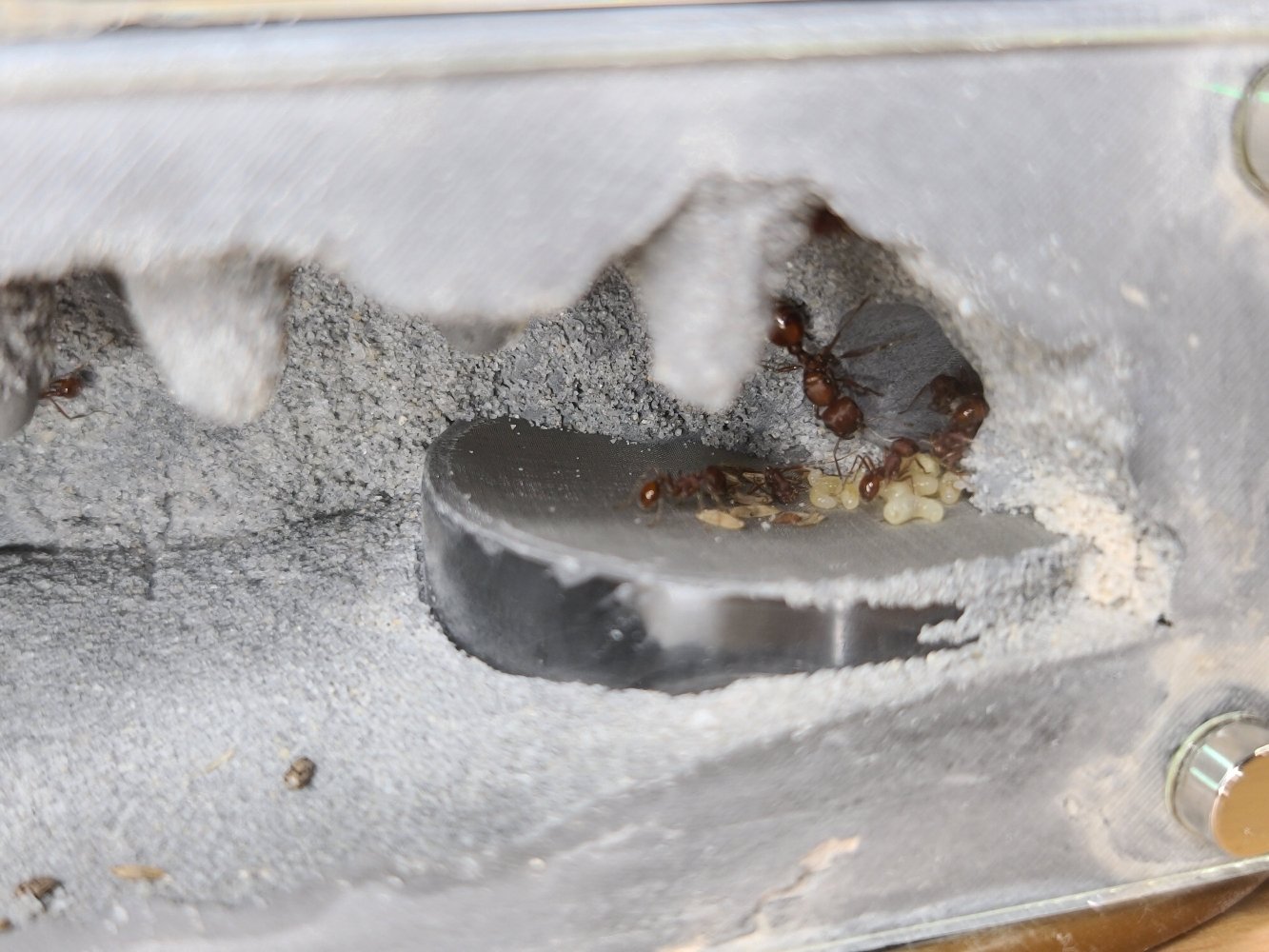
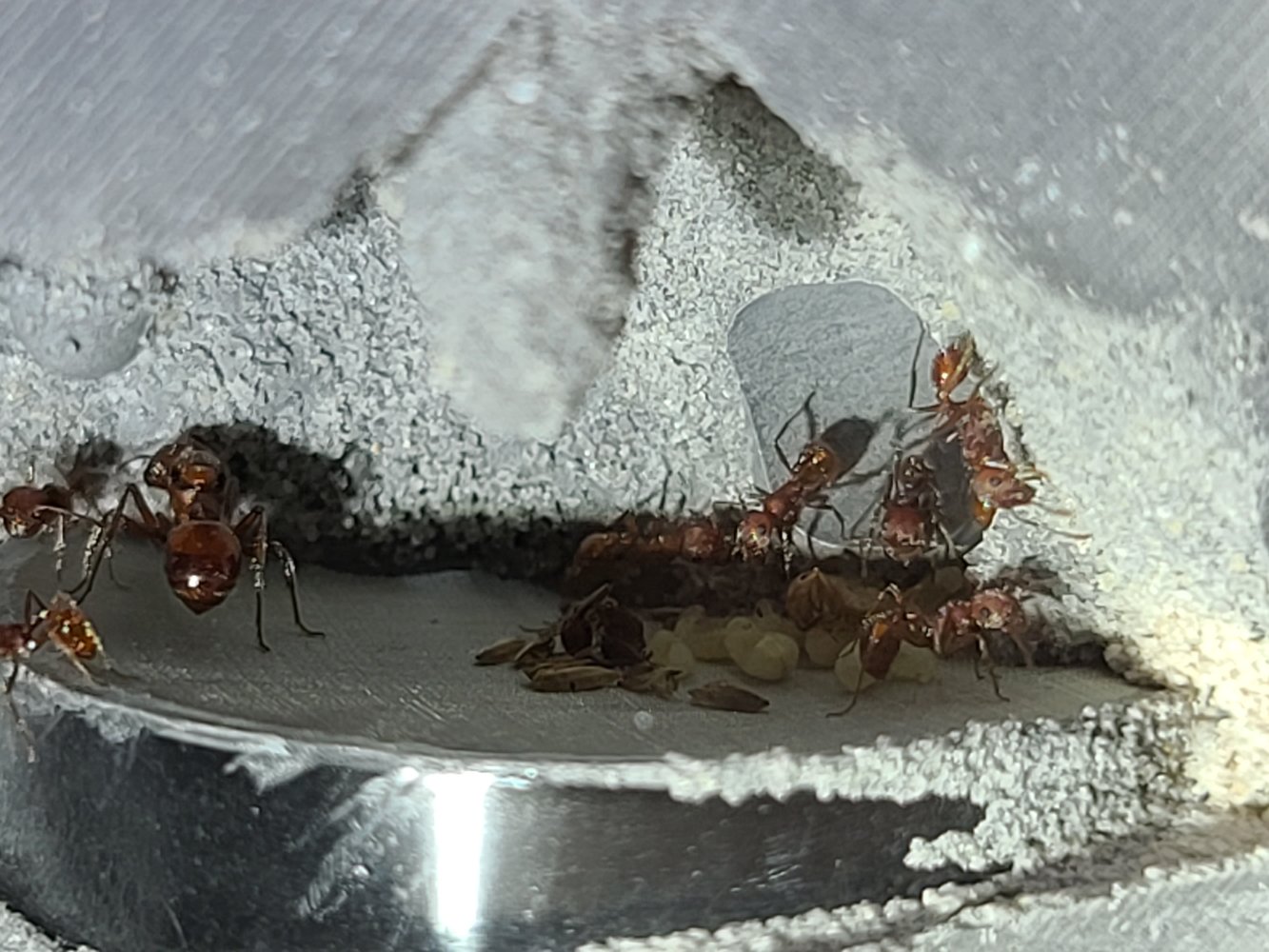
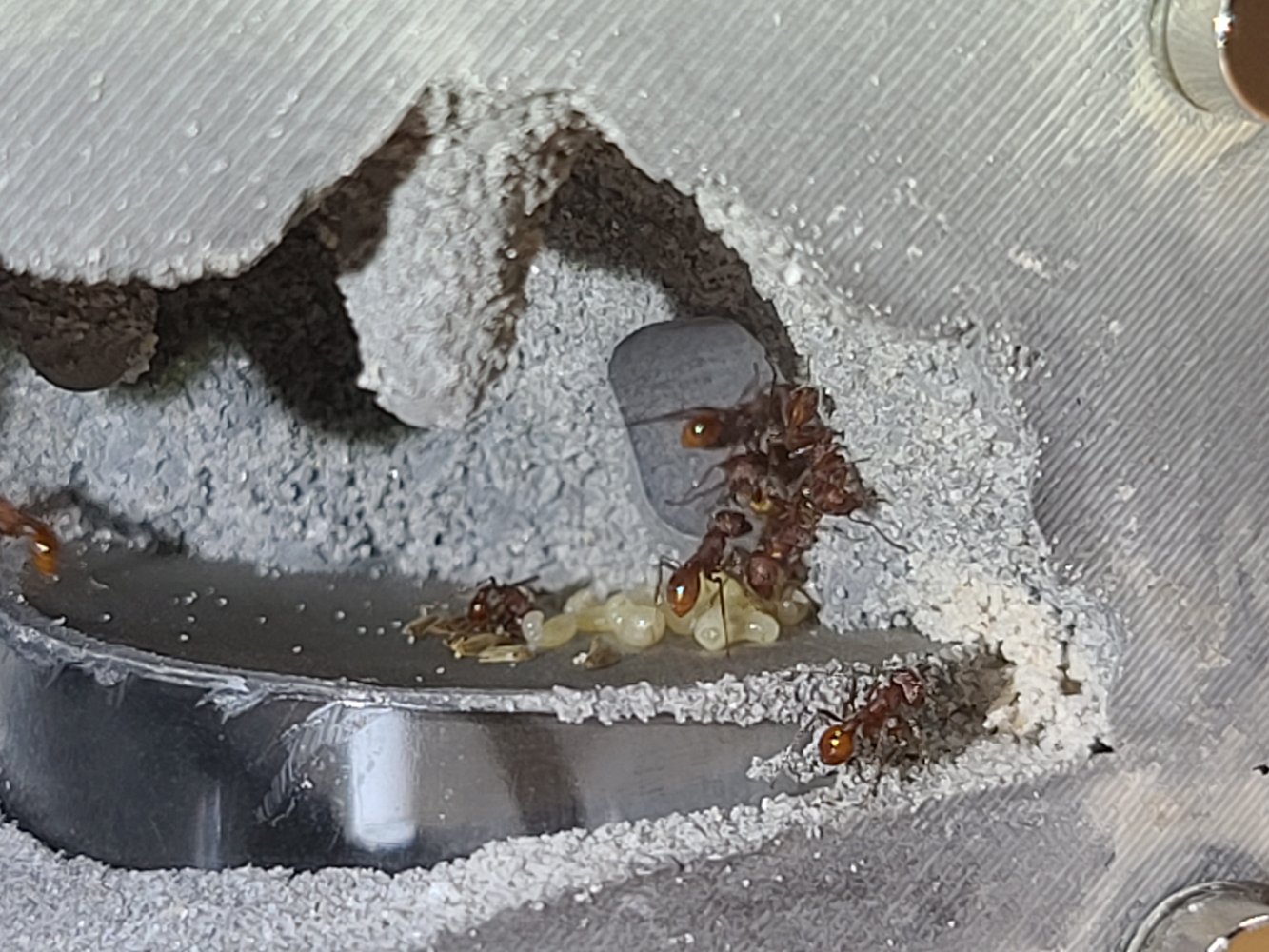
Edited by Acshaw89, May 4 2020 - 6:37 PM.







